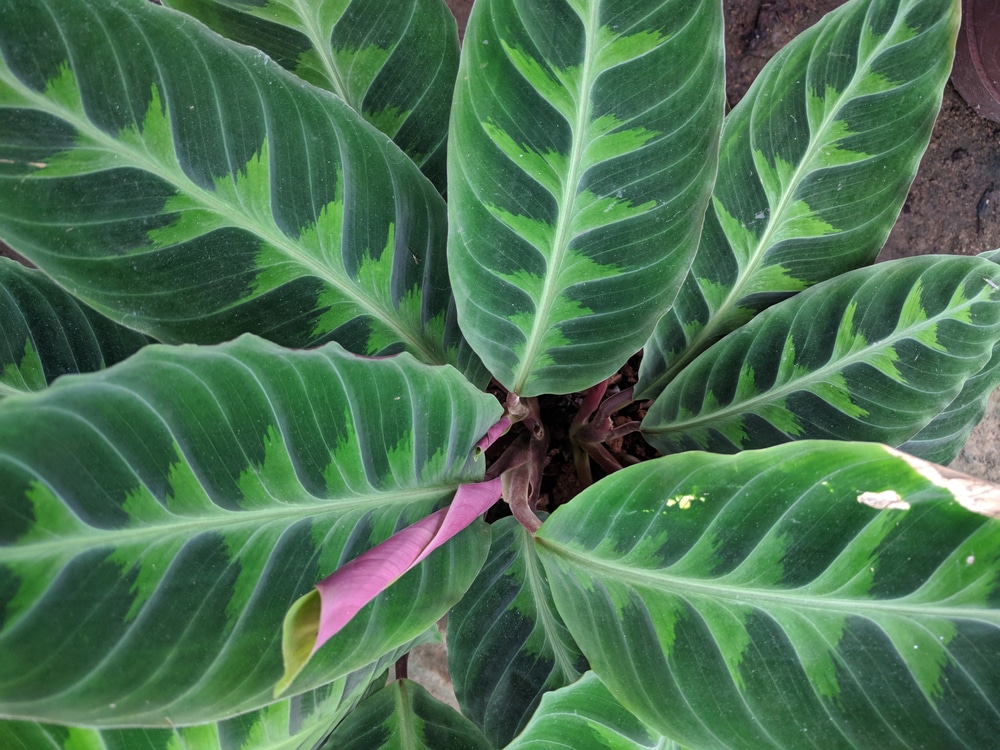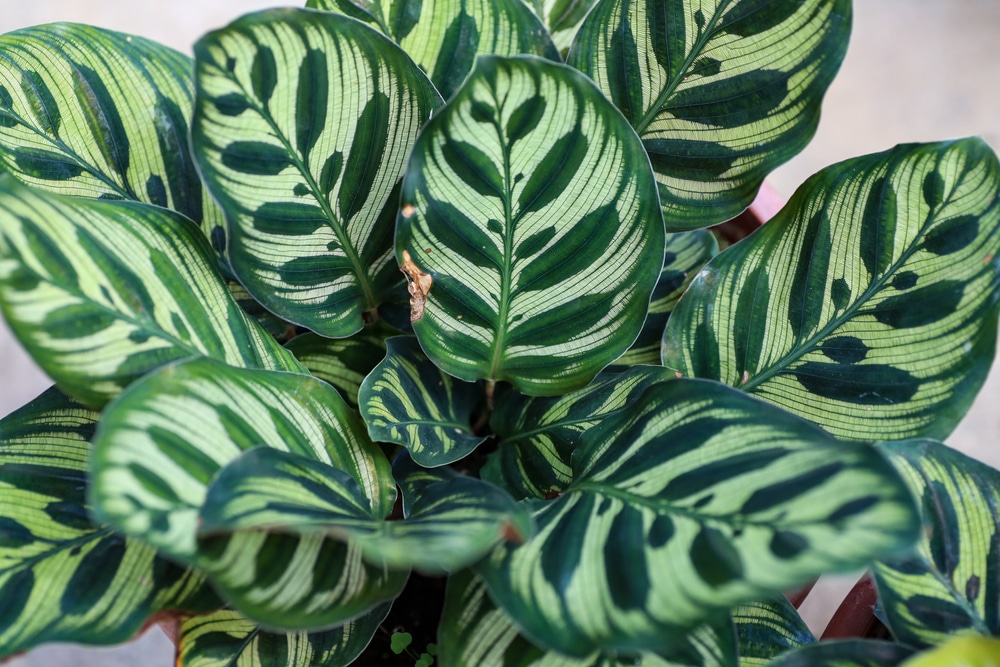Calatheas are stunning houseplants that can make any corner of your house look lush and jungly. However, its beauty comes with some drawbacks. For instance, growing a calathea requires some effort from your side. Don’t get us wrong: that doesn’t make it impossible! But it means you must pay attention to some symptoms that might signal something wrong with your plant. For instance, do you know what it means when calathea’s leaves curl? And how can you revert it to its natural conditions?
Keep reading this essential guide we put together for you if you want to find out!
What Do Calathea Curling Leaves Mean?

One of the first signs something is off with your tropical plant comes from its leaves. Curling in philodendrons, pothos and Calathea is usually a symptom of dehydration. After all, plants “curl” their leaves as a defense mechanism to prevent water loss.
In general, the causes of curling include underwatering, high temperatures, dry conditions (or low humidity) but also root rot, and overfertilization. Additionally, some diseases might also result in curling. But let’s get deeper into each cause (and how to reverse the situation).
Too Little Water
One of the most common causes of Calathea Curling leaves its underwatering. This houseplant is a heavy feeder and needs regular watering. Avoid letting it dry for too long to prevent it from being thirsty and activate its defense mechanism.
Usually, you can check if the problem is a lack of moisture by looking at other signs. For instance, if your plant displays droopy leaves with some yellowing or browning, you might have to adjust your watering schedule. Of course, if the soil feels dry, that’s another sign that you should increase the frequency with which you add moisture to your plant.
If you are unsure about it, consider getting a soil meter probe. Place it in your pot and look at the reading: if it is below 3, you’ll need to water your plant more.
Don’t forget that overwatering may also be an issue with your Calathea. To prevent that, ensure you plant your specimen in a suitable potting mix. You can find more information about it in the following section!
Too Much Moisture
Even too much water can cause leaf curling. This plant likes humidity, but it won’t stand waterlogged conditions that might lead to the roots’ inability to absorb nutrients and water. One of the first signs of overwatering is the browning of the tips of your plant’s leaves. Additionally, the soil might start releasing an unpleasant smell, a symptom of root rot.
Remember to allow the soil to dry before adding extra moisture. Under standard conditions, you should water your plant once a week. But don’t forget to adjust the watering schedule according to your local climate.
If your Calathea’s roots rot, don’t worry: you can still solve the issue if you take prompt action. To avoid killing your plant, you should transplant it to a different container. Of course, the new pot must have a fresh potting mix. The substrate must be well-draining, so consider adding elements such as bark, perlite, or gravel to improve aeration and increase drainage.
Dryness
Calathea needs humidity to thrive. If you live in an arid climate or use AC in your house, you’ll need to take measures to prevent your plant from drying. Strive to maintain 60% humidity around your plants. Consider getting a humidifier or building a pebble tray. Additionally, you can mist your plant’s leaves with water.
Keep in mind that low humidity might look like underwatering. However, to revert to curling caused by it, you’ll need to take different measures.
Too Much Heat
As with most houseplants, Calathea doesn’t perform well in direct sunlight or too much heat. When the temperatures start rising, water will evaporate quicker, which will cause dehydration and curling. Also, sunburn might cause the leaves to turn brown and crispy. Place your plant next to a window but add some shears to prevent it from getting too much lighting.
Also, keep the temperature between 65 and 80°F for better results.
Overfertilizing
Fertilizing your plant can help it boost its growth. However, overfertilization can cause issues.
For this reason, you should always follow the instructions you find on the product’s label. When too much fertilizer causes curling, you may notice a crusty layer around the edges of your pot resulting from the oversaturation of the soil and the consequent dehydration.
